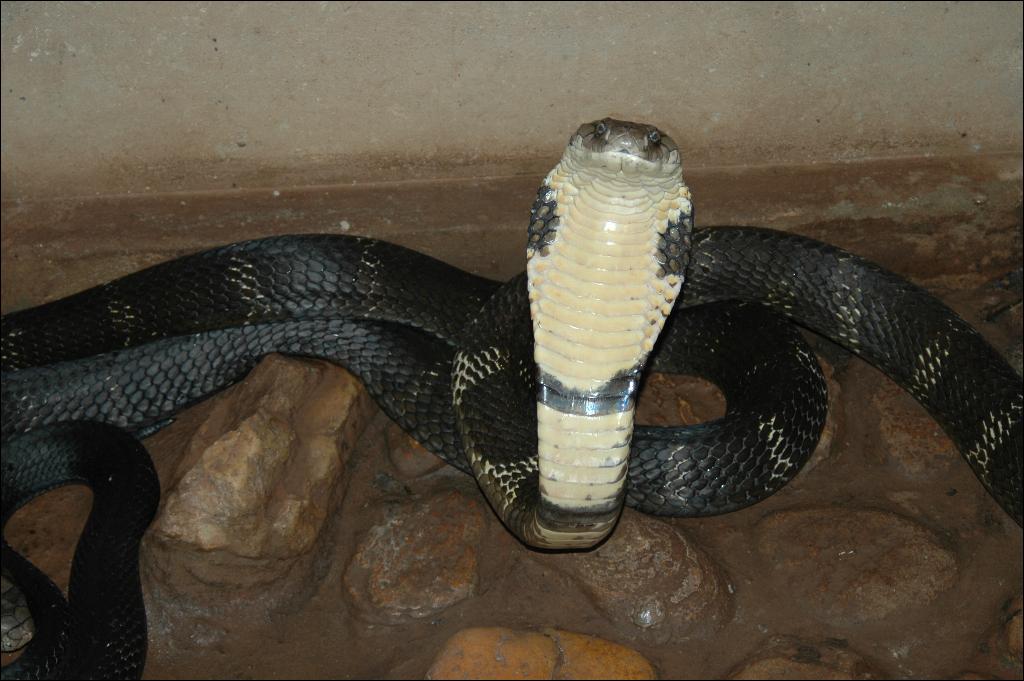In the first two decades of the twenty-first century, 1.2 million people have lost their lives to snakebites. This is despite only 15% of the country’s 270 species of snake being venomous. Surprisingly, the majority of snakebites can be attributed to only four species of snakes. Known famously as the Big Four, the group consists of Common Kraits, Russell’s Vipers, Indian Cobras and Indian Saw-Scaled Vipers. Though not all snakes are venomous, it is quite hard to identify non venomous snakes.
Interactions with snakes is by far the most prominent form of human-wildlife conflict in India. Fortunately, in recent years, there has been much work done to resolve this silent crisis. The use of technology has been proven useful. Removing myths revolving around the slithery reptilians and educating the public about handling snake encounters, will go a long way in mitigating conflict. Identifying features of venomous snakes can also be useful. However, it must be mentioned that there are no immutable methods to identify a venomous snake.
Numerous exceptions exist, and guidelines are never comprehensive. For the layman, it is advisable to steer clear from snakes, even if it seems harmless. This suggestion should actually be followed with all wildlife. Nonetheless, here are four features which are often used to identify venomous snakes. The fallacies in these generalizations are also discussed.
Head Shape

Generally venomous snakes posses triangular shaped heads. Meanwhile, the heads of their non-venomous counterparts are more round shaped. However, head shape is not the most accurate differentiator between the two groups. It is not uncommon for the latter group, particularly water snakes such as Keelbacks, to flatten their head when threatened. It is a highly effective defensive mechanism, as it often makes non venomous snakes appear venomous, in order to dissuade predators. Even humans are susceptible to such deception!
Erect Fangs
Pupils are sometimes used when trying to assess whether or not a snake is venomous or non-venomous. Vipers, which are venomous, have elliptical pupils and most non-venomous snakes have more rounded pupils. However, this categorization is not the most accurate as, for example, the Elapidae family, which consists of tropical venomous snakes such as cobras, do not possess the same. In fact, some non-venomous snakes, such as pythons, boas and night snakes, do also have elliptical pupils. Furthermore, in low light conditions, all snakes tend to round their pupils to increase light intake. Therefore, although pupils are sometimes used, they is not the most convenient differentiator between venomous and non-venomous snakes.
Erect Fangs
Erect fangs are a useful identification cue. However, this trait is limited to the members of a tropical venomous family of snakes, Elapidas family, which includes all cobra species, are identified by these short erect fangs. Species of other venomous snake families, including vipers, lack this trait.
Bright Color
One of the most ubiquitous features of both toxic and venomous animals are bright colours. For frogs and snakes alike, bright colours are a great defensive mechanism due to its association with toxicity. Predators are likely to avoid such colourful prey. In fact, a common phenomena amongst harmless invertebrates is to mimic their colourful counterparts to avoid predation. Regardless, it’s best to observe care around any brightly coloured frog, snake and insect. It is also crucial not to be complacent around dull coloured snakes as numerous non vibrant species, such as the Black Spitting Cobra and Russell’s Viper, are some of the world’s most venomous species.
Overall, there are various ways to try and identify whether a snake is venomous or not, but there is no one perfect way to do so. It is useful to know all 4 of these traits which venomous snakes may possess but the safest attitude to have around snakes is to stay away from all species of them.
Help us Help Them! Think Wildlife Foundation is a non profit organization with various conservation initiatives. Our most prominent campaign is our Caring for Pari intiative. Pari is a rehabilitated elephant at the Wildlife SoS Hospital. 25% of the profits from our store are donated to the elephant hospital for Pari. Other than buying our wonderful merchandise, you could donate directly to our Caring For Pari fundraiser.
